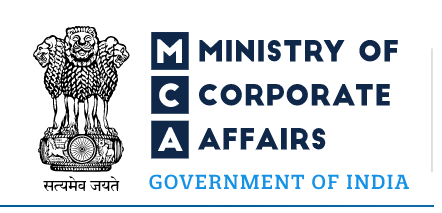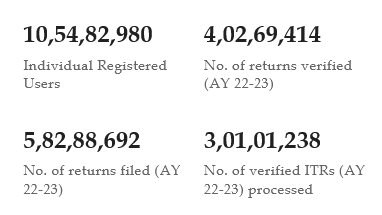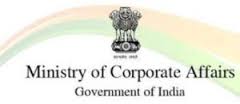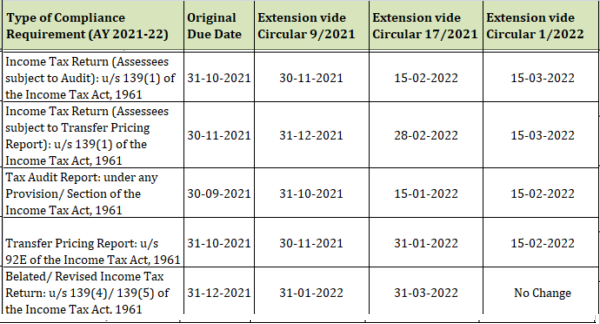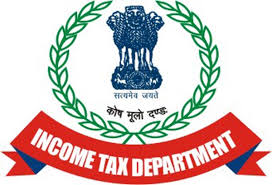The Ministry of Corporate Affairs (MCA) is all set to launch the Second Set of Company Forms on the MCA21 V3 portal, in January 2023, comprising of total 56 forms.
The first lot will consist of 10 forms to be released on January 9, 2023, and the second lot will consist of 46 forms to be released on January 23, 2023.
In order to simplify the process of integrating these forms into ( web based filing) the MCA21 V3 portal, the Ministry of Corporate Affairs has requested stakeholders to take note of the following points:
(1) For 10 forms scheduled for rollout from January 7, 2023, at 12:00 a.m. to January 8, 2023, at 11:59 p.m., company e-Filings on the V2 portal will be disabled for the specified forms that are scheduled to be released on January 9, 2023.
(2) For 46 forms scheduled for rollout on January 23, 2023, company e-Filings on the V2 portal will be disabled from January 7, 2023, at 12:00 a.m. to January 22, 2023, at 11:59 p.m.
(3) All stakeholders are advised to ensure that there are no SRNs in “pending payment” or “resubmission” status.
(4) Offline payments in V2 for the above 56 forms using the “Pay Later” option would be discontinued on December 28, 2022, at 12:00 AM. The stakeholders are required to pay for these forms in V2 online (via credit/debit card or net banking).
(5) Due to the upcoming release of 56 company forms, the V3 portal will be unavailable from January 7 at 12:00 AM to January 8 at 11:59 PM for the roll-out of 10 company forms, and from January 21 to 22, 2023, for the roll-out of 46 company forms.
(6) The V2 Portal for company filing will continue to be available for all forms except the 56 mentioned above.
LIST OF 10 COMPANY FORMS TO BE ROLLED OUT ON 09 Jan 2023
| Sl. No. | Form Number | Form Name |
| 1 | SPICe+ PART A | Application for reservation of name for new company incorporation |
| 2 | RUN | Application for change of name of existing company |
| 3 | SPIce+ PART B | Integrated Company Incorporation Application |
| 4 | AGILE PRO S | Application for Goods and services tax Identification number , employees state Insurance corporation registration pLus Employees provident fund organisation registration, Profession tax Registration, Opening of bank account and Shops and Establishment Registration |
| 5 | e-AOA[INC-34] | Articles of Association |
| 6 | e-MOA[INC-13] | Memorandum of Association |
| 7 | e-MOA[INC-31] | Articles of Association |
| 8 | e-MOA[INC-33] | Memorandum of Association |
| 9 | INC-9 | Declaration by Subscribers and First Directors |
| 10 | URC-1 | Application by a company for registration under section 366 |
LIST OF 46 COMPANY FORMS TO BE ROLLED OUT ON 23rd Jan 2023
| Sl. No. | Form Number | Form Name |
| 1 | DIR-12 | Particulars of appointment of directors and the key managerial personnel and the changes among them |
| 2 | DIR-11 | Notice of resignation of a director to the Registrar |
| 3 | DIR-3 | Application for allotment of Director Identification Number |
| 4 | DIR-3C | Intimation of Director Identification Number by the company to the Registrar DIN services |
| 5 | DIR-5 | Application for surrender of Director Identification Number |
| 6 | DIR-6 | Intimation of change in particulars of Director to be given to the Central Government |
| 7 | INC-12 | Application for grant of License to an existing company under section 8 |
| 8 | INC-18 | Application to Regional Director for conversion of section 8 company into any other kind of company |
| Sl. No. | Form Number | Form Name |
| 9 | INC-20 | Intimation to Registrar of revocation of license issued under section 8 |
| 10 | INC-20A | Declaration for commencement of business |
| 11 | INC-22 | Notice of situation or change of situation of registered office |
| 12 | INC-23 | Application to the Regional Director for approval to shift the Registered Office from one State to another state or from jurisdiction of one Registrar to another Registrar within the State |
| 13 | INC-24 | Application for approval of Central Government for change of name |
| 14 | INC-27 | Conversion of public company into private company or private company into public company or Conversion of Unlimited Liability Company into Limited Liability Company |
| 15 | INC-28 | Notice of Order of the Court or any other competent authority |
| 16 | INC-4 | One Person Company – Change in Member/ Nominee |
| 17 | INC-6 | One Person Company – Conversion form |
| 18 | MGT-14 | Filing of Resolutions and agreements to the Registrar under section 117 |
| 19 | MR-1 | Return of appointment of managing director or whole time director or manager |
| 20 | MR-2 | Form of application to the Central Government for approval of appointment or reappointment and remuneration or increase in remuneration or waiver for excess or over payment to managing director or whole time director or manager and commission or remuneration to directors |
| 21 | NDH-4 | Form for filing application for declaration as Nidhi Company or updation of status by Nidhis. |
| 22 | PAS-3 | Return of Allotment |
| Sl. No. | Form Number | Form Name |
| 23 | SH-7 | Notice to Registrar of any alteration of share capital |
| 24 | SH-11 | Return in respect of buy-back of securities |
| 25 | SH-8 | Letter of Offer |
| 26 | SH-9 | Declaration of Solvency |
| 27 | NDH-1 | Return of Statutory Compliances |
| 28 | NDH-2 | Application for extension of time |
| 29 | NDH-3 | Return of Nidhi Company for the half year ended |
| 30 | GNL-3 | Particulars of person(s) charged for the purpose of sub-clause (iii) or (iv) of clause 60 of section 2 |
| 31 | PAS-6 | Reconciliation of Share Capital Audit Report (Half-yearly) |
| 32 | MGT-3 | Notice of situation or change of situation or discontinuation of situation, of place where foreign register shall be kept |
| 33 | PAS-2 | Information Memorandum |
| 34 | DIR-9 | Report by the company to Registrar for disqualification of Directors |
| 35 | DIR-10 | Application for removal of Disqualification of Directors |
| 36 | AOC-5 | Notice of address at which books of account are maintained |
| 37 | FC-1 | Information to be filed by foreign company |
| 38 | FC-2 | Return of alteration in the documents filed for registration by foreign company |
| 39 | FC-3 | Annual accounts along with the list of all principal places of business in India established by foreign company |
| 40 | FC-4 | Annual Return of a Foreign company |
| 41 | GNL-2 | Form for submission of documents with the Registrar |
| 42 | GNL-4 | Addendum to form |
| 43 | MSC-1 | Application to ROC for obtaining the status of dormant company |
| 44 | MSC-3 | Return of dormant companies |
| 45 | MSC-4 | Application for seeking status of active company |
| 46 | RD-1 | Form for filing application to Regional Director |
Stakeholders are advised by MCA to plan accordingly.
